To keep your running fitness, the best way is obviously to run.. But when you can’t, then the elliptical comes to be the best choice as it helps you keep your central fitness. Unfortunately, you loose your peripheral fitness as you dont have the pounding running gives you. 8 weeks without running did not affect my fitness too much and after 4 weeks, i was a able to run about 110k per week again. I had about 10 weeks of training to prepare for this 50k scheduled on September 13th, 2015. Originally a B-race it turned out to be an A-race.
The course starts at Hakusan, in Gifu, West of Japan. It is of numerous gorgeous area in Japan, surrounded by mountains. You run about 10k before reaching the very scenic 白山白川郷ホワイトロード (Shirakawago-Hakusan White Road). A road only open four months a year to cars only which takes you into the mountains of Hakusan with non-stop breathtaking views all the way for about 30km or so. The elevation profile is very simple: 30k uphill, with 1200m elevation gain, then it’s downtime for 20k, 1000m descent, with a couple of steep hills here and there during the last 5k, just to make sure your legs fall off. You finish in the world heritage Shirakawago Village.
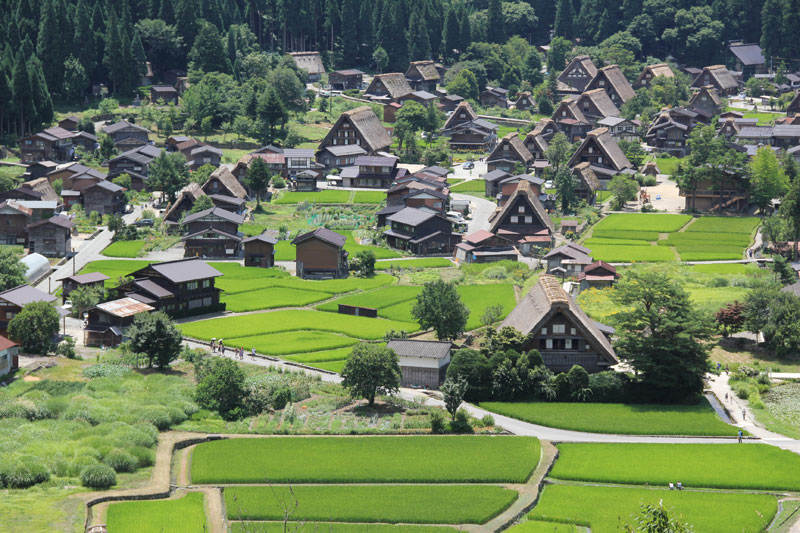
The Void
After my last A-race at Beppu-Betsudai Marathon, I have decided to shift my focus on Ultra-marathons, more precisely mountain hilly road races. As opposed to flat marathon training where long runs were becoming less and less enjoyable to the point of feeling almost painful, training for this kind of event takes me to run in the mountains. While training for Beppu, the question “why am I doing all this?” popped up in my head too many times. It got me thinking a lot. Beyond being just a hobby, I believe being a runner is above all a lifestyle, one we choose to have, one we have the luxury to pick. People run for all kind of reasons, whether to stay fit, to loose weight, to impress someone etc, you name it. But in the end if I’m going to dedicate 5 to 12 hours per week running, if I cannot find pleasure doing what I do then it just defies the purpose. In the end, racing is just about chasing a time (or a guy for that matter), but at what cost? Then I asked myself “what aspects of running do I really like? When and what do I like when it comes to running?”
Over the years I’ve never given a thought, I just ran, I ran until I couldn’t run, day by day, week by week during these past 6 years. Pleasure would become more and more scarce and would be felt only after a very hard tempo/long run. Running was becoming an obsession with no real purpose. At the end of the day, once you tell the world you ran a PB, post it on Facebook, harvested your “likes” and all sorts of social media rewards, once the ephemeral euphory fades, you once again realise that 90% of the people you told your accomplishment have already forgotten what you did simply because they don’t even know the distance of a Marathon, the remaining 10%, your fellow friend runners, might feel happy for you for a little longer but then what? Ok I hear you, you did that for you, not for others. The bottom line was that I was less and less enjoying the process of training for racing. The only time where I felt good was the few hours after a hard workout and the few days after a good race (with time, more and more rare).
Running in the mountains, just by myself, enjoying the wild scenery and the simple beauty of Nature suddenly helped me vanished all the questions that have been taunting me recently. When I’m out there I am no longer chasing a time, a pace. I am running for myself, I’m running for more, to loose myself, I am running to find the void. I used to like running only on pancake flat and concrete surface and hate any form of hill. Now I am only looking for hills, long stretches on hills I can run on. Each time I reach the top of a mountain, I like to stand still, to let the burning sensation of my lungs fade away, to take a deep breath a feel the void, the loneliness and the emptiness.
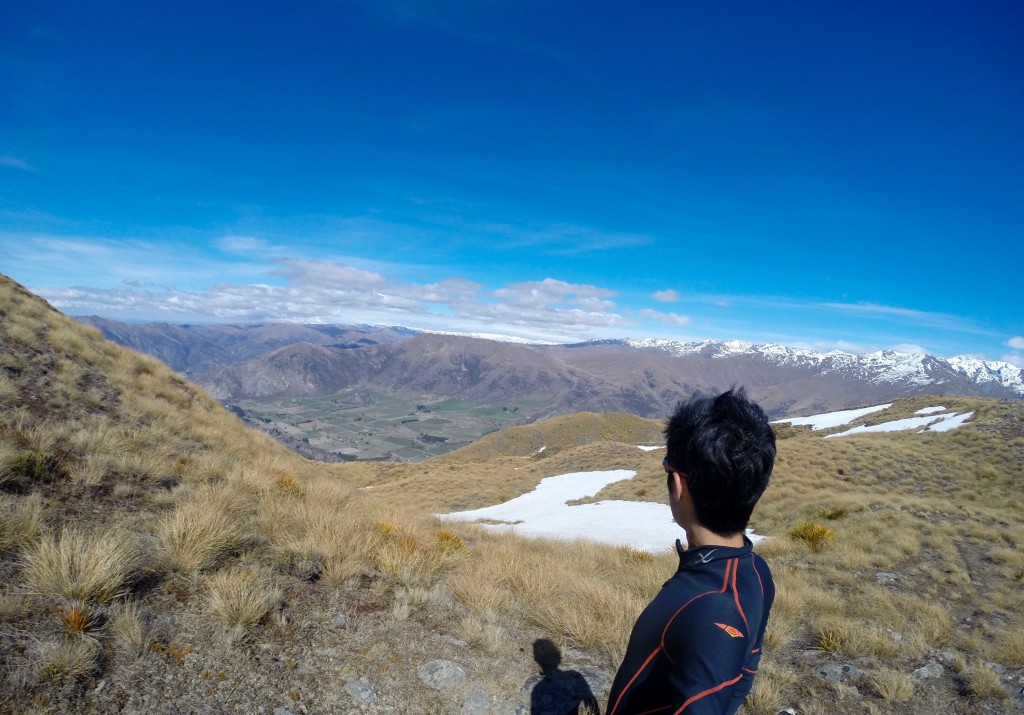
After years of running, I have finally started to understand why many runners have gone to trail running and are able to spend countless of hours in mountains and forests. It is a unique sensation to be able to see the beauty of the wild with your ears, listen to the sound of the wind with your eyes, and feel the water evaporating from your skin.
Race day: back to reality, as usual, my nerves are about to explode as I woke up 30min before the alarm clock. Starting time is set at 7:30 and I woke up at 4:00. Just like any important race, I had my routine dialled in: caffeine free for 10 days prior to the race, intermittent fasting 4 and 2 days prior to the race to boost my insulin sensitivity. That way I don’t have to binge on carb and feel heavy. Race week nutrition very simple: mostly rice and sweet potatoes for the carbs, sashimi for the fat and protein.
Looking at last year’s result I had good chance to finish top 6 and win a prize. The winner came in 3:39 and the 6th position was 4:14. I knew a sub-4 was not a problem. But a sub 3:40 was going to be difficult. Especially with this elevation profile. It starts with a 3% incline for 15k then average 7 ~ 8% incline for 15k. Try to run 8% on a treadmill and you will see ! The strategy is to keep energy in the legs to run the 15k down hill at a fast pace. I was able to maintain a 3:50 ~ 4:05 pace for the steep downhill… much slower that I wanted. I have never run downhill for so long before, the quads were hurting. I was able to distract myself and forget the pain by watching on the side with what the nature had to offer me. I stayed focused on my strides, making sure to hit a high cadence to limit muscle damage, probably above 200 steps per minutes. As I was going down the road I saw the 100k runners climbing up, with no exception, the only thing I could see in their eyes was pain.
At some point, after running by myself with no one in front of me or behind me for quite a while, I could hear steps of another runner catching up with me. At this moment the top 100k leader was running back up. When we passed each other our eyes crossed for a few seconds, a simple glimpse. The time slowed down for a brief moment, just enough to exchange emotions on both side. He was in pain, he had already run close to 70k. My eyes were saying just one thing “I’m tired”. As I was cruising down he was making his way up, and although his face was screaming a great deal of suffering, his eyes were still sharp. Unlike me, pain wasn’t the only thing on his face, much more dominant was the other message, a vivid spark emanating from his eyes “I will win and I won’t let any body pass me”.
Like if I borrowed some of his energy, I increased my pace from 4:05 to 3:40 for the next 3k to make sure the other runner now right behind me doesn’t catch me, which wasn’t done without a good share of pain. After 10 minutes I was running alone again. Then I entered the village, ran through some very steep and short hills.
Last year my wife was at the finish line of the 100k Hida-Takayama race. This year she was waiting for me 100m before the finish line. Seeing her gave me the strength to run the last 300m or so at a sub 4:00 pace. I crossed the finish in 3:48 and 7th overall out of 850. I tend to choose my races on “bad” years as this time would have put me 4th the year before. But just like one of my Padawans just said, “life is never perfect”. But the presence of my wife and seeing her eyes at the finish of every important race is priceless. That makes the imperfection perfect.
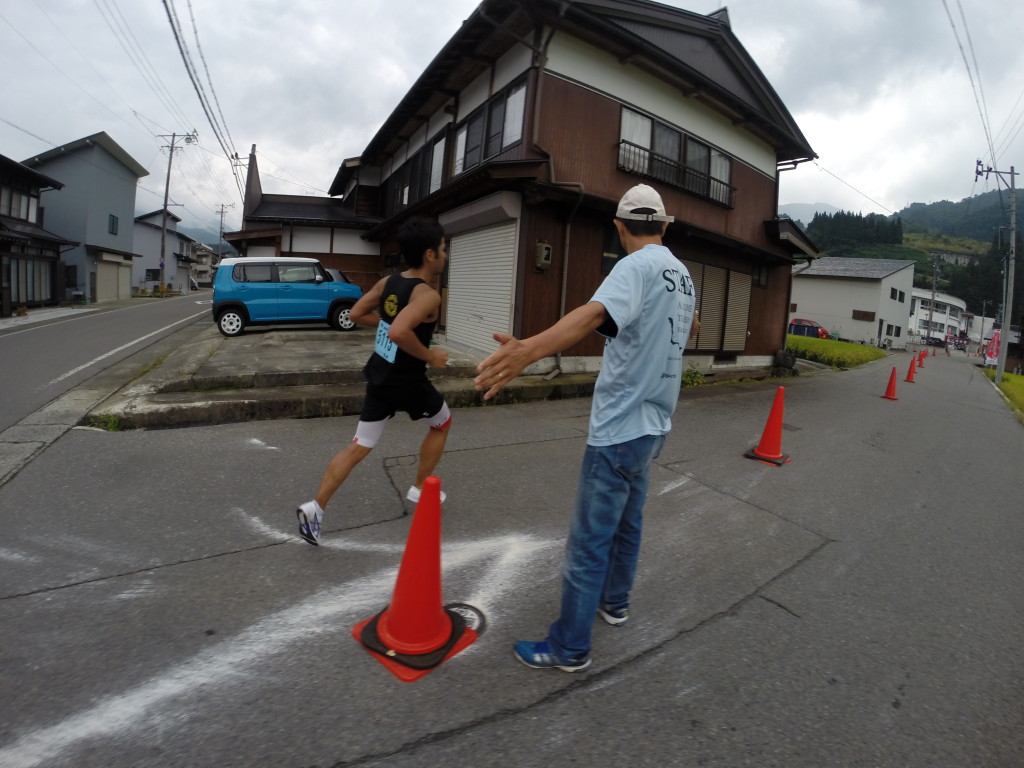
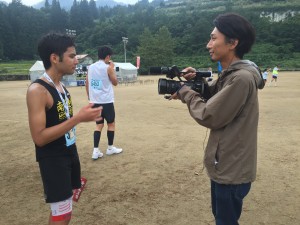

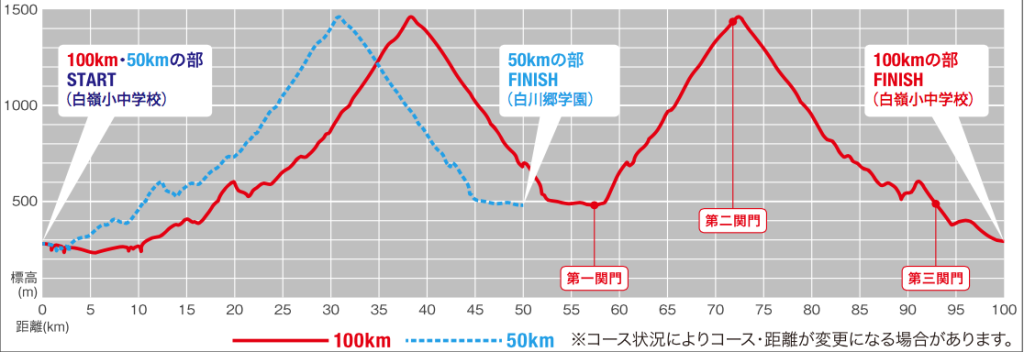
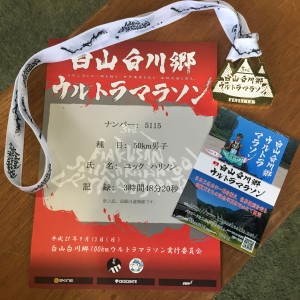
Good report – interesting and well written. I’ve been wondering what your motivation for doing these long races is, and now I know. The “Contemplating the void” photo is great also.
Harrison; a wonderful and inspiring read. Congratulations and thank you for documenting this so eloquently. Nick